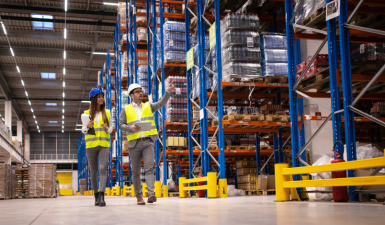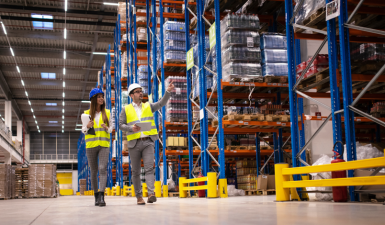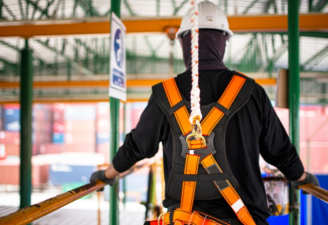
Ensuring the safety and well-being of warehouse workers is crucial for any business involved in logistics, distribution, or storage. Warehouses are dynamic environments, exposing employees to a variety of hazards, from heavy machinery and falling objects to chemical exposure and extreme temperatures.
Personal protective equipment (PPE) plays a key role in mitigating these risks and protecting workers from potential injuries and accidents.
Understanding Personal Protective Equipment (PPE)
Personal protective equipment (PPE) encompasses a range of equipment designed to protect employees from workplace hazards. In a warehouse environment, PPE is crucial. Properly selected and maintained PPE can significantly reduce the likelihood of injury and improve overall workplace safety.

Warehouse safety equipment should include the following:
- Chemical Management Equipment:
MSDS: Ensure all chemicals have MSDS instructions for proper storage and management.
Clear Labeling: Chemicals should be clearly labeled for easy identification and management.
- Electrical Safety Equipment:
Ground-circuit breakers (RCDs) should be installed on all outlets to quickly disconnect power in an emergency.
Insulation Check Tools: Used to regularly check the insulation between equipment and wiring. Safe Alternatives and Insulated Tools: Use safe alternatives and insulated tools during operation.
- Protective Equipment for Working at Heights:
Safety Helmets: Protect the head from injury.
Safety Belts: Ensure operator safety when working at heights above 2 meters.
Safety Barriers and Nets: Installed at openings to prevent falls.
- Fall Prevention Equipment:
Protective Nets: Install protective nets to prevent falling objects.
Safety Helmets: Wear when necessary to protect the head from falling objects.
- Forklift Safety Equipment:
Driver's License: Ensure operators hold a relevant driver's license.
Mirrors: Forklift mirrors should be in good condition to facilitate visibility of the surrounding environment.
Signages and Convex Mirrors: Install guidance and convex mirrors at intersections to improve driving safety.
- Mechanical Injury Prevention Equipment:
Appropriate Container Design: Follow ergonomic principles to reduce injuries such as crushing, puncture, and pinching. 7. Conveyor Equipment Safety Equipment:
Safety Guardrails: Install safety guardrails to prevent people from accidentally entering conveyor areas.
Emergency Stop Buttons: Install emergency stop buttons to ensure a quick response in emergency situations.
- Aisle Management Equipment:
Clear Aisles: Ensure aisles are clear of congestion to facilitate evacuation and material transport.
Non-Slip Flooring: Keep floors dry and non-slip to prevent falls.

Implement an Effective PPE Program
To maximize the effectiveness of PPE in warehouses, managers should:
Conduct a risk assessment: Identify specific hazards and determine the appropriate PPE required.
Develop a PPE Policy: Clearly outline PPE requirements, usage protocols, and responsibilities.
Ensure Proper Fit and Comfort: Select PPE that fits well and is comfortable to encourage consistent use.
Provide Training and Education: Regularly train employees on the importance of PPE and how to use it correctly.
Monitor and Enforce Compliance: Regularly inspect PPE to ensure it is worn and properly maintained.
